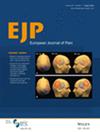Nocebo Effect on Pain-Related Autonomic Responses in a State of Experimentally-Induced Sensitization
Abstract
Background
Enhanced pain-related autonomic responses were reported after experimentally-induced secondary mechanical hyperalgesia (SMH) in healthy individuals as well as in a variety of chronic pain cohorts. Stimulus-induced autonomic responses can also be modulated by positive and negative expectations towards the applied stimulus. This study aimed to investigate the influence of negative expectations on pain-related autonomic responses after experimentally-induced SMH.
Methods
Forty healthy participants (20 females) were recruited and assigned to a NOCEBO or a NAïVE group. Phasic skin conductance responses (SCR) and tonic background skin conductance level (SCL) were recorded in response to 10 pinprick stimuli applied to both volar forearms. On one arm, all stimuli were applied (EXP-arm) before (PRE) and after (POST) an experimental heat pain model to induce SMH. The other arm served as the control (CTRL-arm). The NOCEBO group was instructed that the stimuli will be ‘more intense and painful’ in the POST-assessment. The NAïVE group did not receive any instructions. Pain ratings were matched to a numeric rating scale 4 across all assessments to control for subjective pain perception.
Results
Only the combination of induced SMH and negative expectation (i.e., EXP-arm in the NOCEBO group) increased the pinprick-evoked phasic SCRs (p < 0.001) from PRE to POST. Tonic background SCL increased from PRE to POST (p < 0.01) independent of stimulation area (i.e., EXP-arm or CTRL-arm) or group (i.e., NOCEBO or NAïVE).
Conclusions
These results demonstrate facilitatory effects of top-down modulatory processes (i.e., negative expectations) on pain-related autonomic responses after experimentally-induced SMH.
Significance
This study showed a facilitatory effect of negative expectation on enhanced pain-related autonomic responses in a state of experimentally-induced sensitisation in healthy participants. Hence, pain-related autonomic responses are shaped by both bottom-up (nociceptive input) and top-down (expectation) modulatory processes. This leads to the clinical implication that increased pain-related autonomic responses reported in individuals with chronic pain might not solely reflect pain hypersensitivities through nociceptive sensitisation, but also exaggerated negative expectation.


 求助内容:
求助内容: 应助结果提醒方式:
应助结果提醒方式:


